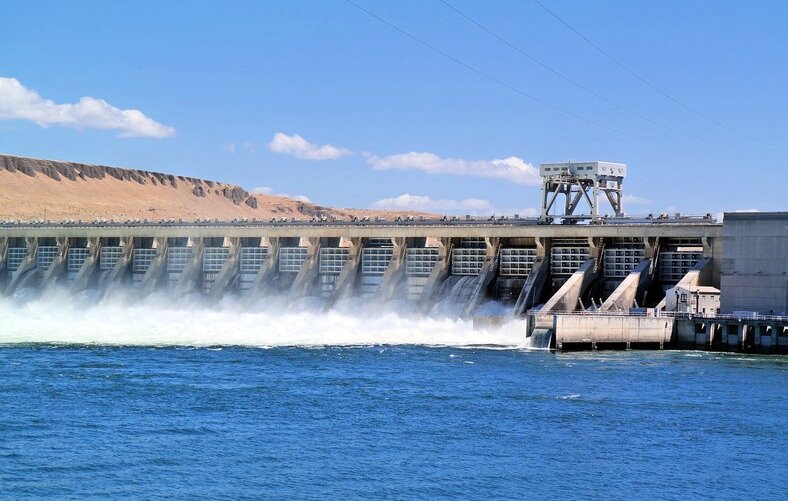
The Power of Water: Hydroelectric Energy Explained
Hydroelectric energy is a renewable and sustainable source of power that uses the force of water to generate electricity. The power of water has been harnessed for centuries, and today, hydroelectric power accounts for approximately 16% of the world’s electricity generation. In this article, we will explore how hydroelectric energy works, its advantages and disadvantages, and the future of this sustainable source of power.
Introduction
Hydroelectric energy is a renewable and sustainable source of power that generates electricity using the energy of falling water. The energy generated by hydroelectric power plants is clean and emits no greenhouse gases, making it an excellent alternative to non-renewable sources of energy such as coal, oil, and gas.
What is Hydroelectric Energy?
Hydroelectric energy is electricity generated by the movement of water. It is a form of renewable energy that harnesses the power of water to create electricity. Hydroelectric power plants use water from rivers, lakes, or dams to turn turbines, which drive generators to create electricity.
History of Hydroelectric Energy
The history of hydroelectric energy dates back to ancient times when waterwheels were used to power mills and other machinery. However, it was not until the late 19th century that the first hydroelectric power plant was built in Niagara Falls, New York. Since then, hydroelectric energy has become a major source of electricity around the world.
How Does Hydroelectric Energy Work?
The Basic Components of a Hydroelectric Power Plant
A hydroelectric power plant consists of four basic components: a dam, a reservoir, a turbine, and a generator. The dam creates a reservoir, which stores water. When the water is released from the reservoir, it flows through a penstock, which is a pipe that leads to the turbine. The turbine is connected to a generator, which creates electricity.
How Water Drives the Turbine
As water flows through the penstock, it turns the blades of the turbine, which is connected to a shaft. The shaft rotates the generator, which creates electricity.
Generating Electricity
The electricity generated by a hydroelectric power plant is sent to a transformer, which increases the voltage of the electricity so that it can be transmitted over long distances. The electricity is then sent to a substation, where it is distributed to homes and businesses.
Advantages of Hydroelectric Energy
Hydroelectric energy has several advantages over non-renewable sources of energy, including:
- Renewable and Sustainable: Hydroelectric energy is renewable and sustainable because it uses the power of water, which is constantly replenished by the natural water cycle.
- No Greenhouse Gas Emissions: Hydroelectric energy generates electricity without emitting greenhouse gases, making it an environmentally friendly alternative to non-renewable sources of energy.
- Low Operating Costs: Once a hydroelectric power plant is built, it has low operating costs because the cost of fuel is zero.
- Long Life Span: Hydroelectric power plants have a long life span and can operate for 50 to 100 years.
Disadvantages of Hydroelectric Energy
While hydroelectric energy has many advantages, it also has some disadvantages, including:
- High Upfront Costs: Building a hydroelectric power plant can be expensive, and the costs can be even higher if a dam needs to be built.
- Land Use: Hydroelectric power plants require a significant amount of land, which can have environmental consequences.
- Disrupts Ecosystems: Building a dam can alter the natural flow of a river and affect the ecosystems that rely on it.
- Limited Availability: Hydroelectric energy is dependent on the availability of water, which can be affected by droughts and other weather conditions.
Environmental Impact of Hydroelectric Energy
Positive Impact
Hydroelectric energy has a positive environmental impact because it generates electricity without emitting greenhouse gases. It also helps reduce our dependence on non-renewable sources of energy, which can have harmful environmental consequences.
Negative Impact
While hydroelectric energy is considered a renewable and sustainable source of power, it is not without its environmental impacts. Building a dam can disrupt the natural flow of a river and affect the ecosystems that rely on it. Dams can also alter the temperature and chemistry of the water, affecting the fish and other aquatic life.
The Future of Hydroelectric Energy
Hydroelectric energy will continue to be an important source of electricity in the future. As the world moves towards renewable sources of energy, hydroelectric power will play a crucial role in meeting our energy needs. However, the environmental impacts of hydroelectric power will need to be carefully considered, and new technologies will need to be developed to make hydroelectric energy even more sustainable.
Conclusion
Hydroelectric energy is a renewable and sustainable source of power that generates electricity using the power of water. While it has many advantages, it also has some disadvantages, including high upfront costs and environmental impacts. As the world moves towards renewable sources of energy, hydroelectric power will continue to play a crucial role in meeting our energy needs.
FAQs
- How much of the world’s electricity is generated by hydroelectric power?
Hydroelectric power accounts for approximately 16% of the world’s electricity generation.
- What is the main advantage of hydroelectric energy?
The main advantage of hydroelectric energy is that it is renewable and sustainable, and generates electricity without emitting greenhouse gases.
- What is the main disadvantage of hydroelectric energy?
The main disadvantage of hydroelectric energy is the high upfront costs and environmental impacts associated with building a dam.
- How does hydroelectric energy impact the environment?
While hydroelectric energy is considered a renewable and sustainable source of power, building a dam can disrupt the natural flow of a river and affect the ecosystems that rely on it.
- What is the future of hydroelectric energy?
Hydroelectric energy will continue to be an important source of electricity in the future, but new technologies will need to be developed to make it even more sustainable.
